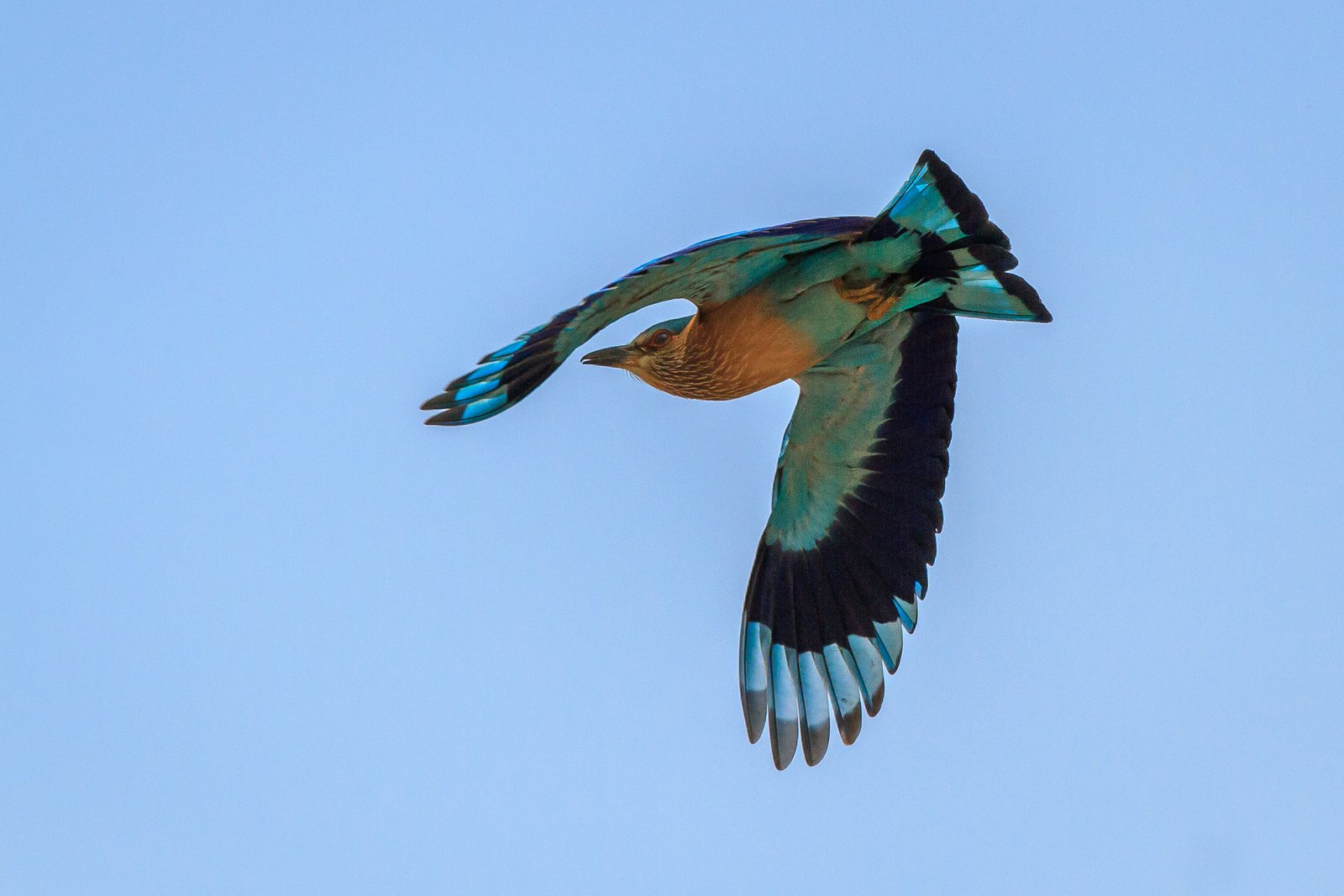Many would say that the winters are the best time for birdwatching in any of the forests of the Indian Subcontinent. This would not be entirely incorrect, as several species of migratory birds make their way to the subcontinent to escape the harsh winters of their breeding grounds. But I would say that the brief spring, between the winters and summers, is the best time to see the birds in Kanha.
By this time, several of the winter migrants have left the forests of Kanha, and the ones which have not left are also getting ready to leave. But the real fun is to watch the resident birds, which are getting ready to breed, at this time. Triggered by the lengthening of the day and the warmth it brings along with it, several of the resident birds get busy courting, breeding, fighting off rivals and building their nests, or trying to accomplish more than one of these tasks simultaneously.
The Indian Roller (Coracias benghalensis) has one of the most flamboyant plumages of any Indian bird. The brilliant hues of electric blue shimmer in the sun more often than not, as the roller generally prefers the open grassland patches rather than the shaded woodlands of Kanha. But the brilliance of its colour cannot be appreciated until you see the bird in flight. The roller gets its name from its habit of performing ‘rolling’ displays, a series of airborne stunts performed by the male to attract a female.

But no other display is probably as ostentatious as the dance performed by male Indian Peafowl (Pavo cristatus). The males prefer to dance in areas frequented by the peahens while foraging. An open area, where the view of the ladies looking at them is not obstructed, is an added bonus. Real estate fulfilling these conditions is rare, and guarded fiercely. These gaudy gladiators wage carefree battles in order to gain momentary control of a small patch of forestland; and these battles can go on for hours, or even for days occasionally.

The act of mating itself is quite brief in most birds; and it can be quite awkward for some. Swallows are tiny birds, no bigger than sparrows, built for flying. Their slender and streamlined bodies, and long, pointed wings are all designed to keep the bird in air for a long time. As a result, swallows spend a large part time of the day flying, catching insects and drinking water in flight too. When they land, these steadfast fliers look quite uncomfortable. And then when they are asked to mate, the act is nothing short of a walk on a tight rope.

But probably the most taxing task a bird has to complete during the breeding season is that of building a nest. And the act of building a nest is probably most demanding for the woodpecker. With their strong, heavy bills, woodpeckers drill holes in trees to nest in. Woodpecker pairs generally select a new place to nest every year, as the last year’s nest is no longer hygienic or gets encroached by squatters. Owls, parakeets, mynas, squirrels and several other residents of the forest depend on the woodpecker to build a nesting hole for them. So come spring time, the poor woodpeckers gets busy once again, drilling a new nesting cavity for itself.

This brief period of spring is the perfect time for the birds to accomplish this list of laborious tasks. Summers quickly set in, and temperatures soar quite rapidly in the Central Indian forests, making it difficult for any animal to be active for much part of the day. But for an passionate birdwatcher like me, these are simply times of endless joy.
Pranad Patil
Naturalist, Singinawa Jungle Lodge



